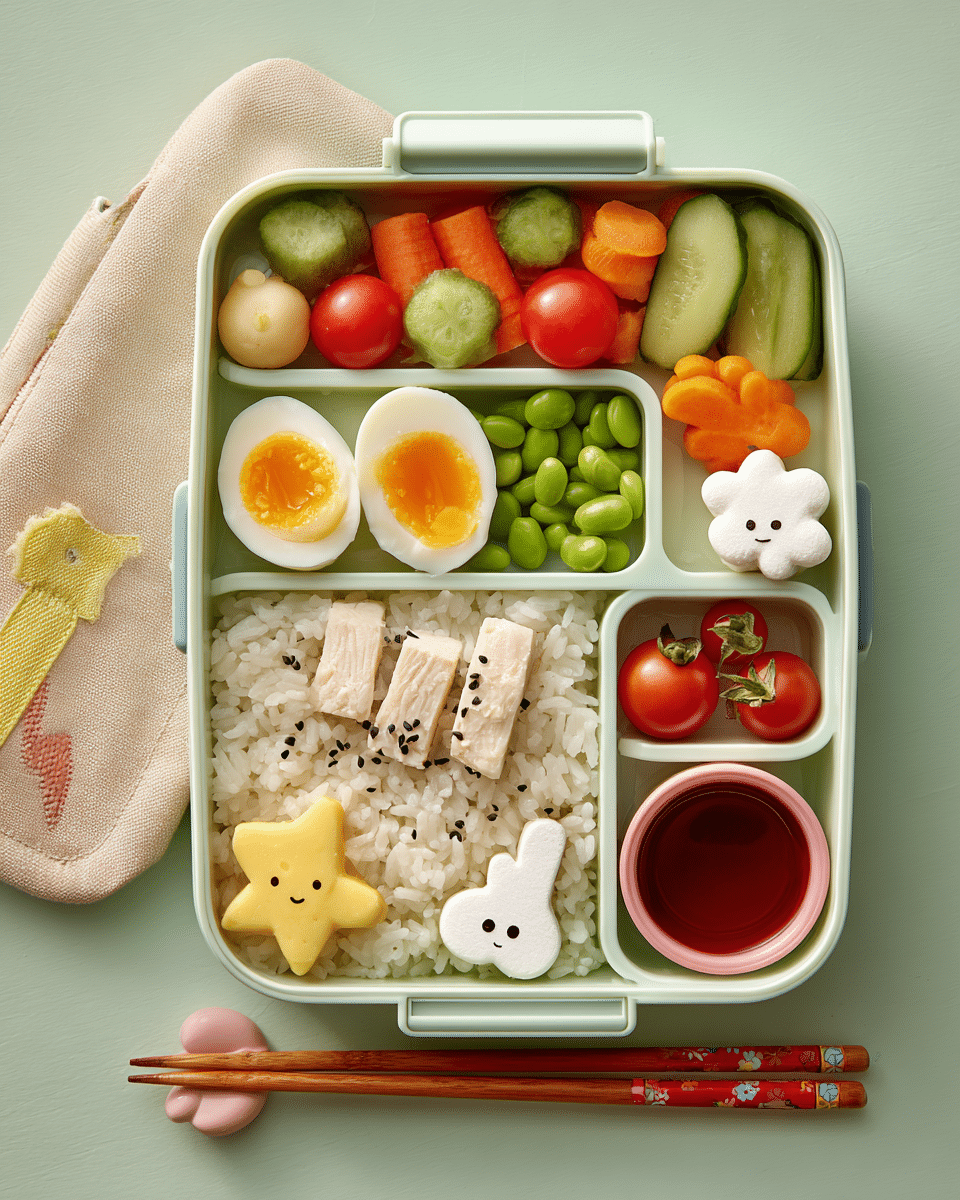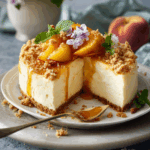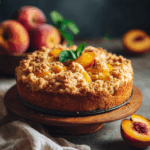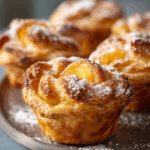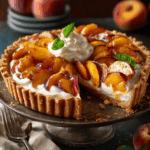Bento lunch boxes are a creative and practical way to pack a well-balanced, visually appealing meal that’s ideal for work, school, or picnics. Originating from Japan, bento boxes typically include a variety of small portions that cover all major food groups — proteins, carbs, vegetables, and fruits — and often feature fun shapes or themes that encourage healthy eating for both kids and adults.
FULL RECIPE
Ingredients
- 1 cup cooked jasmine rice (or sushi rice)
- 1 tablespoon rice vinegar
- 1 teaspoon sesame seeds (optional)
- 1 medium boiled egg
- 4–5 baby carrots
- ½ cucumber, sliced into sticks
- 4–5 cherry tomatoes
- 4 pieces cooked chicken nuggets or grilled chicken strips
- ¼ cup edamame (steamed and shelled)
- 1 small mandarin orange or fruit of choice (grapes, apple slices, etc.)
- 1 slice cheddar cheese, cut into shapes (optional)
- Soy sauce or dipping sauce (in a small leak-proof container)
Directions
- Cook jasmine rice according to package instructions. Once done, mix in rice vinegar and let it cool completely.
- While rice is cooling, boil the egg to your preferred doneness (hard-boiled recommended). Peel and set aside.
- Prepare vegetables by peeling the baby carrots, slicing cucumber into sticks, and rinsing cherry tomatoes.
- Steam edamame or thaw if using frozen, and allow to cool.
- Cook chicken nuggets or grill chicken strips until golden and fully cooked. Let cool slightly.
- Peel and separate the mandarin orange or prepare your chosen fruit.
- Arrange each component neatly in a bento box container: rice on one side (you may shape it using a mold or ice cream scoop), protein (chicken), veggies, egg, and fruit.
- Garnish rice with sesame seeds and place cheese cutouts on vegetables or rice if using.
- Include soy sauce or a dip in a sealed mini container.
- Store in the refrigerator if prepping ahead. Best eaten within 24 hours for freshness.
Nutrition Facts
- Calories: 420 kcal
- Protein: 22 g
- Carbohydrates: 38 g
- Dietary Fiber: 5 g
- Sugars: 9 g
- Total Fat: 18 g
- Saturated Fat: 5 g
- Cholesterol: 130 mg
- Sodium: 620 mg
- Vitamin A: 80% DV
- Vitamin C: 60% DV
- Calcium: 15% DV
- Iron: 12% DV
The Origin and Cultural Significance of Bento Lunch Boxes
Bento lunch boxes originated in Japan centuries ago and have evolved into a cultural icon representing convenience, nutrition, and aesthetics. Traditionally, a bento is a single-portion meal packed in a box, designed to be both balanced and visually appealing. In Japanese culture, bento boxes are not only practical but also reflect care and creativity, often prepared by family members for loved ones. The artistry of arranging food to be both colorful and appetizing is highly valued, making bento a symbol of thoughtful meal preparation.
Nutritional Balance in Bento Lunch Boxes
One of the main advantages of bento lunch boxes is their focus on balanced nutrition. Typically, a bento includes a portion of protein, carbohydrates, vegetables, and fruits, ensuring a well-rounded meal. This balanced approach helps regulate blood sugar levels, maintain energy throughout the day, and provide essential nutrients like vitamins, minerals, and fiber. The inclusion of colorful vegetables and fruits also boosts antioxidant intake, which supports immune health.
Health Benefits of Ingredients Commonly Used
Ingredients commonly found in bento boxes, such as steamed vegetables, lean proteins, and whole grains, contribute to overall health and well-being. For instance, vegetables like carrots and cucumbers are rich in vitamins A and C, which promote healthy skin and immune function. Protein sources like chicken or eggs help build and repair muscles, while rice or other grains provide sustained energy. Including a small amount of healthy fats, such as those from seeds or cheese, aids in nutrient absorption and brain health.
Customizing Bento Boxes for Dietary Preferences
Bento lunch boxes are highly adaptable to various dietary needs and preferences. Whether you follow vegetarian, vegan, gluten-free, or low-carb diets, bento boxes can be customized to fit your lifestyle. For vegetarians, tofu, tempeh, or legumes can replace animal proteins, while gluten-free soy sauce or tamari can be used to maintain flavor. The flexibility of bento allows everyone to enjoy a nutritious meal that fits their personal health goals.
Creative Presentation and Food Art
The visual appeal of a bento box is a big part of its charm. Many people enjoy making their bento meals look fun and artistic by using food cutters, arranging items by color, or creating themed characters known as “kyaraben.” This creativity can make mealtime more enjoyable, especially for children, encouraging them to eat a variety of foods. Artistic presentation also reflects mindfulness and care in food preparation, which can enhance the eating experience.
Meal Prep and Convenience
Bento lunch boxes are perfect for meal prepping, allowing you to save time during busy weekdays. Many components, like cooked rice, boiled eggs, and steamed vegetables, can be prepared in advance and stored in the fridge. This makes assembling a bento quick and easy, minimizing morning rush stress. The compartmentalized design keeps foods separate and fresh, maintaining texture and flavor until it’s time to eat.
Serving Suggestions and Pairings
When serving a bento lunch, consider pairing it with simple sides like miso soup or a light green salad to round out the meal. Tea, especially green tea, is a traditional and refreshing beverage choice that complements the flavors of a bento. For those who enjoy dipping sauces, including soy sauce, sesame dressing, or a spicy mayo in a small container can elevate the taste and add variety.
Storage and Food Safety Tips
To ensure your bento lunch remains safe and fresh, proper storage is key. Pack perishable items in airtight containers and keep the bento refrigerated until consumption. Using ice packs can help maintain cool temperatures, especially during hot weather or long commutes. It’s best to consume the bento within 24 hours to enjoy the best taste and avoid foodborne illness.
Variations and Regional Influences
While traditional Japanese bento boxes follow a specific style, there are many regional and modern variations around the world. For example, Korean dosirak and Chinese lunch boxes have their own unique flavors and ingredients but share the concept of balanced, compartmentalized meals. Fusion bentos may include international dishes such as tacos, pasta, or falafel, showing how adaptable the bento concept is to different cuisines.
Environmental Impact and Sustainability
Using a reusable bento box supports sustainability by reducing reliance on disposable packaging and plastic waste. Many bentos are made from eco-friendly materials such as stainless steel or BPA-free plastics. Preparing your lunch at home also minimizes food waste compared to eating out or buying prepackaged meals. Embracing bento culture can thus contribute positively to environmental conservation efforts.
Conclusion
Bento lunch boxes are much more than just convenient meal containers—they represent a harmonious blend of nutrition, creativity, and cultural tradition. Their balanced composition supports a healthy lifestyle, while the artistic presentation adds joy to everyday meals. With endless customization options and benefits in meal prep and sustainability, bento boxes are an excellent choice for anyone looking to enjoy tasty, wholesome lunches with a personal touch.

